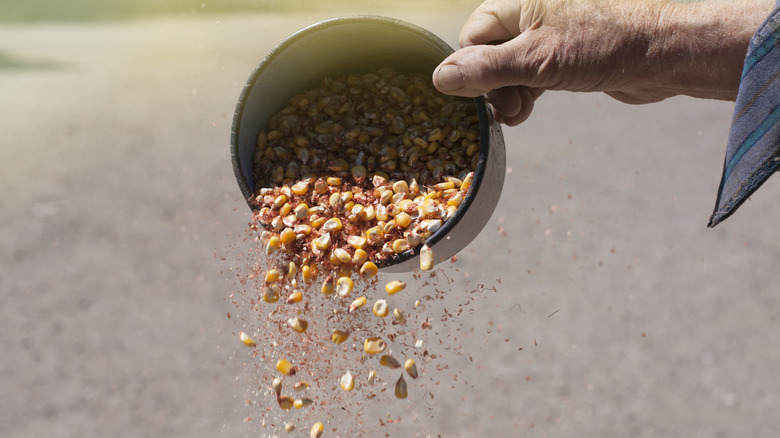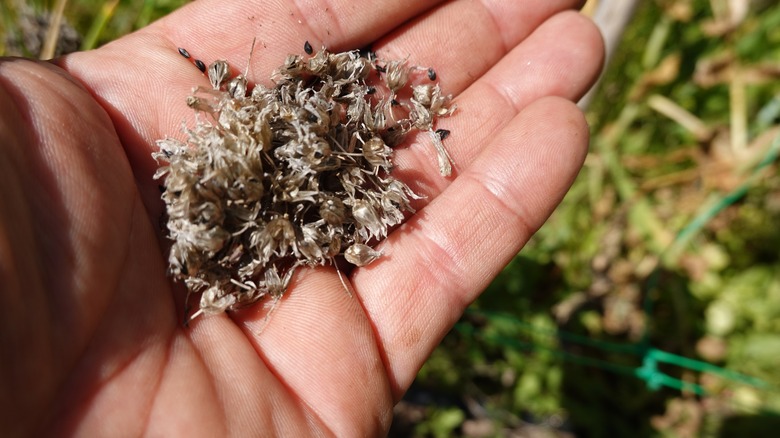Why Winnowing Is Key When Cleaning Seeds & How To Do It Right
Growing your own plants from seed can be one of the best ways to garden. Not only is seed starting less expensive than buying plants, but there are also often more varieties available to you that way. Even better for your wallet than buying seeds, though, is harvesting seeds from your own garden to plant. However, when saving seeds, know that you shouldn't just save the whole seed pod or seed head to plant. Instead, it's important to winnow your seeds, or separate them from the plant debris.
Winnowing your seeds doesn't just keep you from wasting space through storing unnecessary plant debris, it also helps your seeds last longer because they are less likely to rot if they aren't stored with the pods and other dead plant matter. This unnecessary material — which is often called chaff, especially when it is from grain crops — should then be composted. While the process of separating your seeds from the chaff may vary slightly depending on the type of seed you are working with, one of the most common methods is to simply blow it away.
Winnowing seeds
Once you have identified some flowers or vegetables whose seeds you want to save, you should wait for the seed to fully form and ideally begin to dry on the plant. You can also pick the seed heads as soon as they are fully mature and allow them to dry inside, if the weather won't allow them to dry on the plant. Be sure to only save seeds from the plants that were healthy and performed well. Once the seed heads have fully dried, you can smash or crumble them to free the seeds. Now you're ready to begin winnowing the seeds.
Because the chaff is almost always lighter than the seeds, you can use a fan to simply blow away the unnecessary plant material. Often people slowly drop the combination of chaff and seeds in front of a fan, allowing the heavy seeds to fall straight down into a bowl or bucket, while the lighter chaff is blown clear. You can even use the wind to help you winnow. Winnowing can get messy, so be sure to either work outside or put down some newspaper for your chaff to land on if you opt to do this indoors. In some cases you can even lightly blow on the mix of seeds and chaff to blow the chaff clear of the seeds.
Seeds that are best for winnowing
When preparing to save seeds it is essential to know what seeds are appropriate to save. Plants that are open pollinated or self pollinated are good options, as unlike with F1 hybrids, their seeds should grow to be the same as the parent plant. You should be able to either check your seed packets if you still have them or look online if you aren't sure if your cultivar is a hybrid or not.
While winnowing is ideal for dry seeds, wet seeds surrounded in pulp, like tomato seeds, should instead be saved using the fermentation method. It is the small dry seeds like carrots, onions, grains, and beets that benefit the most from the winnowing process. Even for larger seeds that are usually much easier to work with, like beans, winnowing can still be useful — especially if you are cleaning a large number of seeds.

